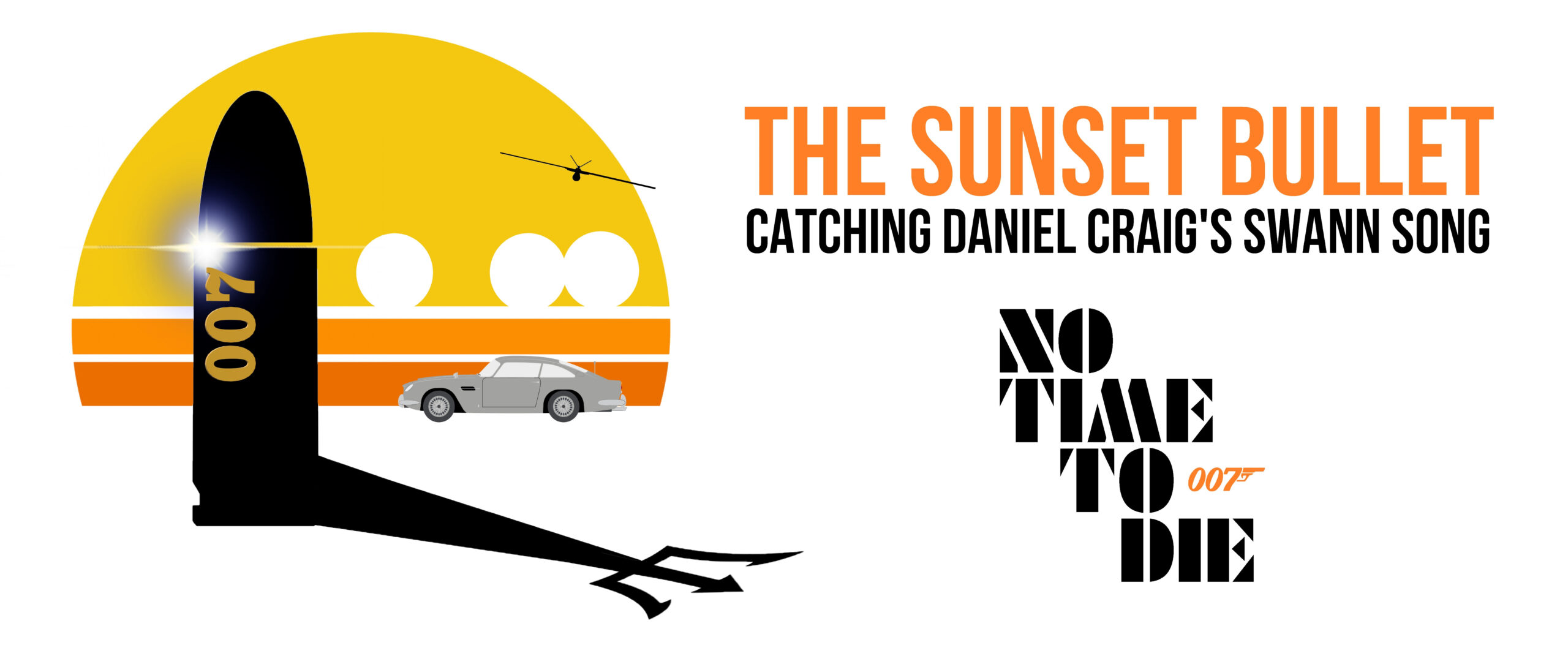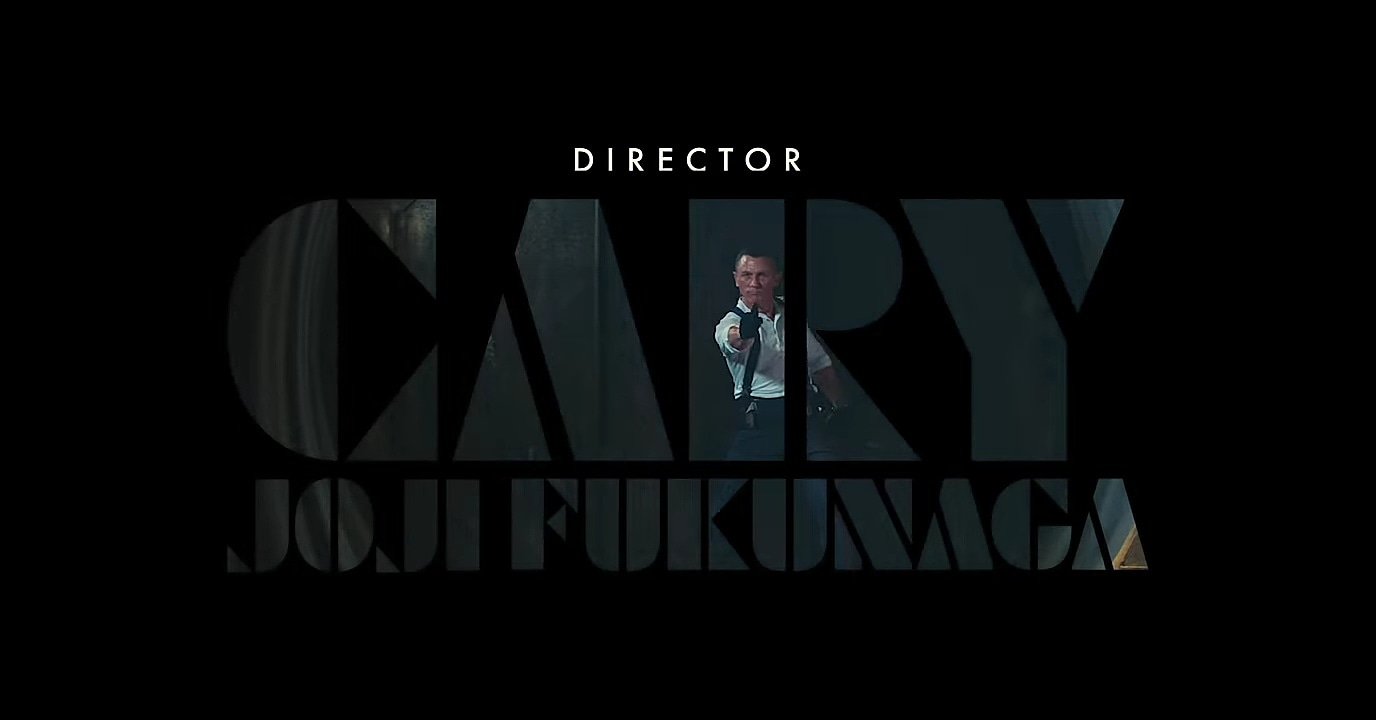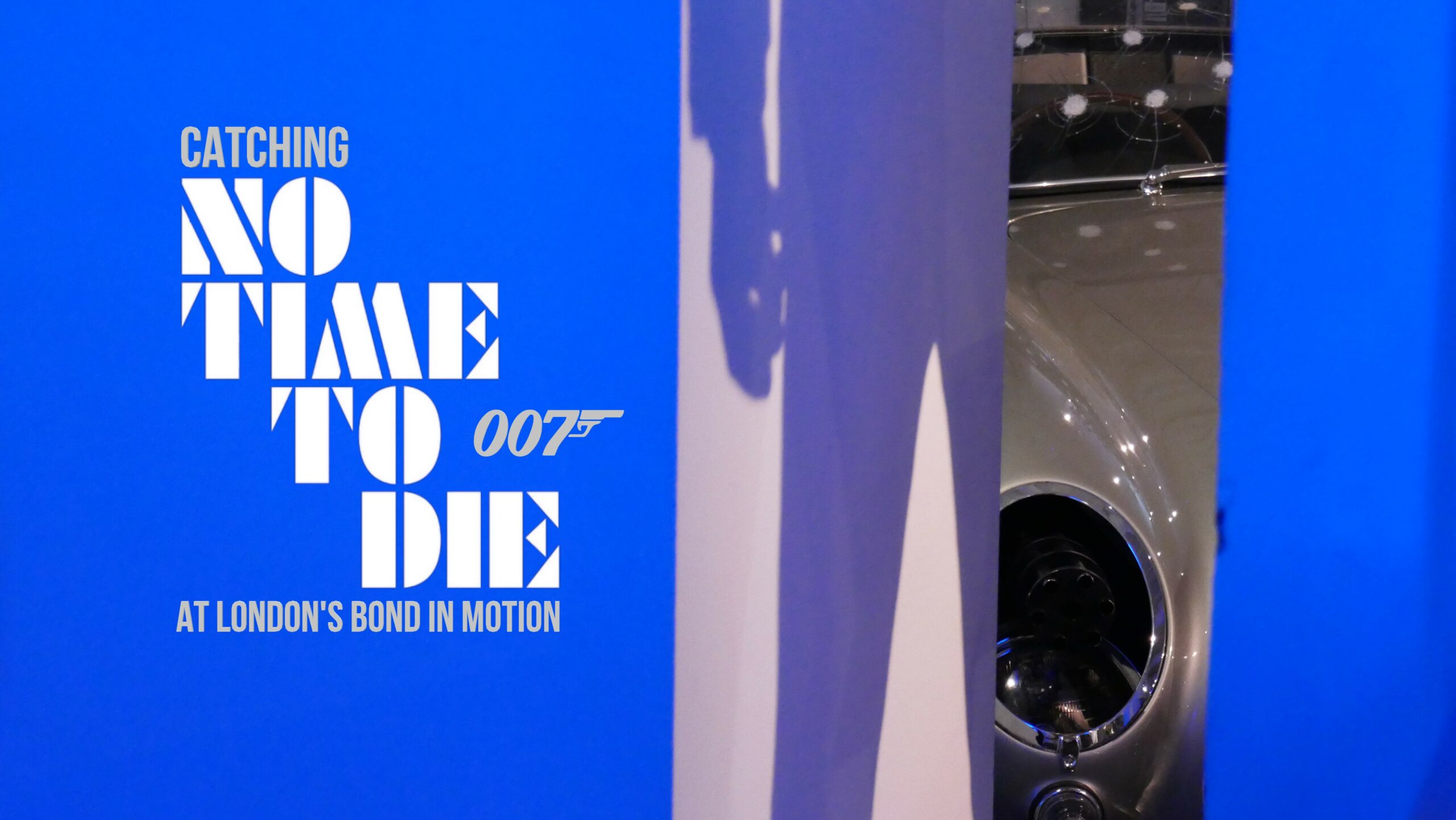
Tag: Lea Seydoux
SPOILERS!!
“The dead are alive” whispers a humble caption as an audacious and sinister opening shot soars, swoops and tracks into one of Bond’s greatest opening overtures. As a lone figure pushes through a pulsing exodus of Day of the Dead carnival goers, it’s Samedi Night Fever on the streets of Mexico City. Spinning senoritas, sexy La Catrinas and cadavarious cads jostle and party in a glorious and ghoulish ‘one take’ melange of remembrance and skulduggery. Pinned to one ‘continuous’ and brilliantly mounted five minute take, Hoyte Van Hoytema’s camera finds our man James and his corpse bride already embroiled in a deadly hunt of cat and louse. Cue all manner of roof hopping, cuff shooting and a remembrance funday the likes of which Craig’s Bond has never done before with such zest, scope and ball-busting ambition. With Tambuco’s pounding percussion, Chris Corbould’s wholly logical special effects, Jamy Temime’s bravura costume design and Gary Powell’s heart-pounding stunt work – these are department heads at the utter peak of their Bond game. And this is just the first ten minutes of Spectre. Not even that. But already this breathless, apocalypse wow of a helicopter fight over the Zócalo puts this movie’s opening gambit up there with any Union Jack parachute or jetpack escape.
That playful sense of relief and victory has been slightly absent from the Craig era. It didn’t sit with the internal dramatics and renovated psyche of our man James. But in Spectre these opening heroics are fierce, epic and nail bitingly victorious. Craig and director Sam Mendes utterly earn that moment when Sam Smith’s mid Sixties strings fire like familiar harpoon guns into a John Barry-savvy ocean and Daniel Kleinman’s inky titles begin their wraithlike dance. As writhing snakes form the cornea of an eye, eye sockets burn like it’s 1973 and Live and Let Die all over again and Kleinman pays apt reverence to Salvador Dali’s multiple eye motif (from Alfred Hitchcock’s Spellbound), Spectre’s notion of surveillance and watching is readily apparent. The turbulent wake behind a speeding bullet becomes the tentacles of an octopus that grips, smothers and seduces; and a naked Daniel Craig stares at the audience as various hands and arms flail for his attention (in a homo-baiting visual not totally dissimilar to a topless, faceless George Lazenby in a OHMSS teaser poster). As the titles make one of cinema’s most utterly reassuring declarations that once again “Albert R. Broccoli’s Eon Productions presents”, a million shards of glass do indeed haunt Bond from his past when the Ghosts of Bond Films Past, Le Chiffre and Silva twist and remind like story phantoms. Contrary to some of the naysayers bashing Sam Smith, it is a wholly fresh notion to cast a male vocalist and a pained love song that retracts the traditional and bombastic momentum of a Bond song with a quiet falsetto or three (Communard Bond anyone?!).
 And before you know it, we’re back through that double tufted leather door and Ralph Fiennes’ vexed M bashing Bond for being a Guardian headline. The world’s security agencies and MI6’s Double O Section are allegedly at a crossroads – a cyber sea-change in an ever prescient world of refugees, holiday resort terrorism and identity theft. The rigid, Apprentice contestant sneering of newcomer Andrew Scott and his bureaucratic Max Denbigh are flagging up change for everything that M and Bond know . A new shared surveillance network called Nine Eyes proposes replacing agents in the field with “drones” and previously guarded nations will rather spuriously now “share” information. The thrust of Spectre is utter Edward Snowden and his damaging and downright petrifying claims about government surveillance techniques. This is not surprising for Eon and this particular Bond film. Producer Barbara Broccoli currently has her film making sights on Glenn Greenwald’s Pulitzer Prize winning book, No Place to Hide – Edward Snowden, the NSA and The Surveillance State. In Spectre the NSA is the fictional CNS – the Centre for National Security – or perhaps a rather dubiously managed central nervous system rife for abuse and personal intrusion. Once again out on his own and saddled with diktats from above that even M cannot stop, Bond must not only pursue the mission he is already on when the film starts, he must also do so with the least interaction with the home side.
And before you know it, we’re back through that double tufted leather door and Ralph Fiennes’ vexed M bashing Bond for being a Guardian headline. The world’s security agencies and MI6’s Double O Section are allegedly at a crossroads – a cyber sea-change in an ever prescient world of refugees, holiday resort terrorism and identity theft. The rigid, Apprentice contestant sneering of newcomer Andrew Scott and his bureaucratic Max Denbigh are flagging up change for everything that M and Bond know . A new shared surveillance network called Nine Eyes proposes replacing agents in the field with “drones” and previously guarded nations will rather spuriously now “share” information. The thrust of Spectre is utter Edward Snowden and his damaging and downright petrifying claims about government surveillance techniques. This is not surprising for Eon and this particular Bond film. Producer Barbara Broccoli currently has her film making sights on Glenn Greenwald’s Pulitzer Prize winning book, No Place to Hide – Edward Snowden, the NSA and The Surveillance State. In Spectre the NSA is the fictional CNS – the Centre for National Security – or perhaps a rather dubiously managed central nervous system rife for abuse and personal intrusion. Once again out on his own and saddled with diktats from above that even M cannot stop, Bond must not only pursue the mission he is already on when the film starts, he must also do so with the least interaction with the home side.
 In Spectre there is a wonderful stuck in boarding school during the holidays dynamic about the M, Moneypenny, Q and Tanner foursome. With Denbigh pitched as Spectre’s blinkered and dangerously naïve Ofsted inspector, Fiennes beleaguered, but principled turn as MI6’s headmaster is one of the film’s highlights. Still imbued with that ex-army, Northern Irish veteran life alluded to in Skyfall, Fiennes’ M is a fiercely principled man, defending with pride the skills of “my quartermaster” and of course top agent, Bond. Echoing one of Bond’s educations in 2008’s Quantum of Solace and probably the key thrust of Spectre, Fiennes firmly believes “a licence to kill means knowing when not to kill”. Playing down some of the near idiot savant tics of the character in Skyfall, Ben Whishaw’s Q relaxes his quartermaster into a supporter of 007. Less cool and aloof geek, he is now more Airbnb savvy hipster getting himself embroiled in a perilous field trip with only the thinnest of escape options. It is a seriously encouraging state of affairs when Bond’s home side are made up of at least three possible future Knights of the British acting fraternity – Fiennes, Kinnear and Whishaw.
In Spectre there is a wonderful stuck in boarding school during the holidays dynamic about the M, Moneypenny, Q and Tanner foursome. With Denbigh pitched as Spectre’s blinkered and dangerously naïve Ofsted inspector, Fiennes beleaguered, but principled turn as MI6’s headmaster is one of the film’s highlights. Still imbued with that ex-army, Northern Irish veteran life alluded to in Skyfall, Fiennes’ M is a fiercely principled man, defending with pride the skills of “my quartermaster” and of course top agent, Bond. Echoing one of Bond’s educations in 2008’s Quantum of Solace and probably the key thrust of Spectre, Fiennes firmly believes “a licence to kill means knowing when not to kill”. Playing down some of the near idiot savant tics of the character in Skyfall, Ben Whishaw’s Q relaxes his quartermaster into a supporter of 007. Less cool and aloof geek, he is now more Airbnb savvy hipster getting himself embroiled in a perilous field trip with only the thinnest of escape options. It is a seriously encouraging state of affairs when Bond’s home side are made up of at least three possible future Knights of the British acting fraternity – Fiennes, Kinnear and Whishaw.
 One almost passing moment of M dining alone (at Rules – Covent Garden’s real dining refuge as featured in the spy worlds of writers Graham Greene and John Le Carre) is so well pitched as an out of hours Moneypenny and Q show concern for Bond, the mission and their careworn boss. Once again London is a support character in Spectre. But this is a very different London to that so gloriously used in 2012’s Skyfall and the wake of the Jubilee and the Olympics. This is a London for loners. Bond lives alone in a decidedly sparse apartment, M dines alone or is on the lamb with only a meagre holdall of his possessions, a lone Q operates into the early hours out of his own refuge, Moneypenny walks down empty streets at night and MI6’s abandoned base at Vauxhall now cuts a lonely, derelict sight.
One almost passing moment of M dining alone (at Rules – Covent Garden’s real dining refuge as featured in the spy worlds of writers Graham Greene and John Le Carre) is so well pitched as an out of hours Moneypenny and Q show concern for Bond, the mission and their careworn boss. Once again London is a support character in Spectre. But this is a very different London to that so gloriously used in 2012’s Skyfall and the wake of the Jubilee and the Olympics. This is a London for loners. Bond lives alone in a decidedly sparse apartment, M dines alone or is on the lamb with only a meagre holdall of his possessions, a lone Q operates into the early hours out of his own refuge, Moneypenny walks down empty streets at night and MI6’s abandoned base at Vauxhall now cuts a lonely, derelict sight.
Cut to an Italian job in Rome and a funeral rendezvous with Monica Bellucci’s striking and life worn widow, Lucia Sciarra. “Can’t you see I’m grieving?” she barks as Bond’s coy “No, I can’t” is not long followed by quite a passionate bout of Catholic baiting nooky. Not even the Pope could absolve Bond of his sins now. Spectre is a decidedly passionate film. After Lea Seydoux’s Dr Madeleine Swann and Bond are embroiled in a highly brutal train fight with Dave Bautista’s burly Hinx, an urgent instrumental version of Sam Smith’s title song spills into what is a really passionate embrace and a great Roger Moore inspired answer to “well, what do we do now?”. Seydoux’s Madeline Swann is a markedly downbeat Bond woman. Played by rising French actress Seydoux (Blue is The Warmest Colour, Grand Central, Midnight In Paris) the Proustian Madeleine Swann is a play on words and continues Skyfall and writer John Logan’s literary cameos. A madeleine cake was famously referenced at the beginning of Proust’s Swann’s Way – when the subject marks how a nostalgia-making madeleine brings back a tumult of hard emotions and childhood remembrances. Further underlining the nod, Swann’s Way was the first chapter of Proust’s In Search of Lost Time (À la Recherché Du Temps Perdu, 1913) which translates as the more familiar Remembrance of Things Past and is all over Spectre as Bond, Madeleine and Oberhauser almost trip over their childhood photos and regret.
A long time casting wish for the Bond camp, Monica Bellucci’s presence is a beguiling, yet all too brief one. It is a slither of an appearance, but one that sets the film up for one of its masterstrokes – the reintroduction of criminal organisation, Spectre. One gate-crashing bout of Bond’s best Italian language skills later and it’s For Your Eyes Wide Shut as Bond infiltrates a cult-framed criminal summit – a ruthless enclave of vengeful business, dubious start-up schemes and the minutes of terrorism. Fearful accountants attempt buoying up middling business success, murderous assignments are tendered out to the most tender-less of candidates and one particular new board member makes a viciously violent play on the phrase ‘by the pricking of my thumbs’. And there is a microphone. And a tannoy. There is no monorail alas, but in a world of mass cyber communication it is refreshing to see how a starter business like Spectre still relies on a pointed microphone. On a stand.
Actually, Spectre the film is refreshingly tech-free. All keyboard tapping intrigue is kept to a minimum, a trickling line of spilt beer is as good a way of finding hidden rooms these days, a secret hand gesture rather than a retina scan gets you into villains lairs, an alpine clinic demands all phones and guns to be handed over upon arrival and the DB10 is not fully fledged just yet (but it does boast a Frank Sinatra cd – in a possible nod to one of Cubby Broccoli’s close pals). In the best John Glen era swagger, Bond is very much “on his own this time” as the story and M require Bond to not communicate with anyone.
And so to Christoph Waltz. Alongside Javier Bardem, the double Oscar winner was the Bond films must-have villain. The National Theatre of Eon now has its most apt actor to nail that necessary sense of European villainy so memorably pioneered in the SPECTRE-bound likes of From Russia with Love and Thunderball. As Franz Oberhauser, Waltz crafts a very still and quietly calculating nemesis. Nothing however quite matches that doom-ladened boardroom entrance as Oberhauser drops the name “James” into the minutes with foreboding precision. In sockless slip-ons, humdrum slacks and a Nehru suit jacket he refuses to properly button up, Oberhauser emerges almost as an aloof Jeremy Corbyn at a seaside conference. Possibly disadvantaged with constant references to previous Bond villains, Oberhauser may also ultimately emerge as somewhat of a lesser force. He certainly upholds Dr. No’s skills at picking the right dress size for his visiting Bond women, Rosa Klebb’s ability to sour a hotel room for guests and Helga Brandt’s penchant for torture (the Craig era does love to strap its lead to a chair). Obviously the elephant in Spectre’s room is 007’s most famous adversary. But if anything this film is about the children of Spectre – the next generation of flame keepers. And flame throwers. It is a sinister beat when Bond and Swann are in separate rooms at Oberhauser’s Moroccan base and are unnerved to see framed photos on the walls of their childhoods.
The lurking white cat that is Mr White has been sauntering under the radar for three Bond movies now. The Austrian scenes between Jesper Christensen’s White and Bond are one of Spectre’s triumphs. Once again Christensen drags with him a Jacob Marley sense of impending, inescapable doom. But there is now a conscience and a resignation to his fate and actions. Rather than wholly using the Hannes Oberhauser strand of Ian Fleming’s 1966 short story collection Octopussy & The Living Daylights as expected, it is Mr White who is afforded writers John Logan, Robert Wade, Neal Purvis and Jez Butterworth nod to the source material. Instead of Octopussy’s father in the 1983 film being provided with an honourable alternative to court martialling and an shameful death, it is now Mr White in a scene that comes back to haunt Bond in quite a marked, devilish way.
 There is of course more Fleming DNA weaved throughout this Bond bullet. An unused Fleming title is finally put to good use, Fleming’s great nephew Tam Williams plays an all-important, but faceless lover and a torture scene lifts directly from Kingsley Amis’s 1968 continuation Bond novel, Colonel Sun.
There is of course more Fleming DNA weaved throughout this Bond bullet. An unused Fleming title is finally put to good use, Fleming’s great nephew Tam Williams plays an all-important, but faceless lover and a torture scene lifts directly from Kingsley Amis’s 1968 continuation Bond novel, Colonel Sun.
And talking of Mr White (and taking one of Roger Moore’s Bond Women tropes of the 1980s), Spectre has a lot of Daddy issues. Lea Seydoux’s ele-quaint turn as a White Swann of haunted memories, divorced parents, a hatred of weaponry is oddly affective alongside her striking love for Commander Bond. And Franz himself is clearly blaming his father and his relationships for his life choices. But the one figure who is refreshingly free of such familial angst is James Bond himself. The much touted back story of the Oberhausers and a teenage James are almost superfluous to Spectre. This then leaves Craig’s 007 to utterly enjoy the Bond ride in the first of his four films (to date) which is just a fun mission.
One of the successes of Spectre is how it reinstates – and earns – that Bond swagger. As composer Thomas Newman’s choir and Vatican establishing shots fanfare that Bond Arrives ™ moment, this twenty-fourth 007 bullet is peppered with joyous beats and assertive tangents. This is a Bond film with abundant champagne on ice, an alpine clinic with remote control shutters, a rather useful watch and a real lack of second unit domination. And that unashamed heterosexuality is back. Quite right. Craig’s Bond has not yet bedded a Bond woman who stays with him as the end credits hit. There is even space for not one, but two ‘c’ word gags. That potty mouthed Judi Dench and her Skyfall expletives have a lot to answer for.
Sam Mendes second spin of the dice is less the bespoke, mahogany hued world of Skyfall. The Mexico City scenes have a contemporary immediacy to them whilst conversely the Morocco scenes aboard a vintage train and later in the desert reek of Agatha Christie movies as an anachronistically dressed Bond and Swann await an appointment with death. Cue EON Productions’ Chauffeur Complex (and one close to the heart of Catching Bullets – Memoirs of a Bond Fan). Nearly every Bond film features a suited chauffeur. Spectre is no different as an approaching and beautiful Rolls Royce Silver Wraith shimmers out of a desert mirage like a wheeled Omar Shariff and reminds of Kleinman’s title wraiths.
Talking of Lawrence of Arabia, there is a marked nod to David Lean in Spectre. Pursuing the hot and cold motif of Mexico and Morocco versus the freezing climes of Austria, Hoyte Van Hoytema’s cinematography has the romantic visual sweep of Doctor Zhivago and that duality of ice and sand. Antique trains thread through the desert, shadows are thrown at Spectre HQ like Ken Adam drapes and aerial shots show Bond and London from the eye of an eagle. Hoytema’s work here underpins one of the most romantic looking of Bond movies. Freddie Young (who shot Zhivago, Lawrence and 1967’s You Only Live Twice) would be proud. The dusty hues of Mexico City are awash with that key marigold Day of the Dead colour, Austria is lent a drab February ski trip grey and Rome is suitably romanticised and Catholicised with candle-light auburns and oranges. One pull focus gem sees a resigned Lucia Sciarra and her last ever nightcap flanked by death only for Bond to turn the tables in one slickly orchestrated beat.
This is not a 007 adventure that feels the need to keep the action plate spinning. Casino Royale was sometimes fearful of its central card game motif so threaded in constant physical peril and stairwell skirmishes. The action beats in Spectre are all pinned to the story. As in Skyfall, the stunts inform the narrative rather than pause it. Gravity is the action motif here – the gravity of Bond sliding down a crumbling Mexican wall onto an abandoned sofa, the gravity of a fiercely realised fist fight aboard an out of control helicopter, the gravity of what goes up must come down, the gravity of a wingless plane chasing a fleet of jeeps down an Austrian mountain on nothing but momentum, the gravity of a playful parachute descent in Rome and the gravity of a last act jump off an exploding building.
From Pale Kings to pain authors, Spectre is a breathless triumph that breathes, thrills, romances and glows with a sinister, retro pride. It is Mendes’ Kubrickian opera of baroque quirks, wit and deliberately strange imagery.
Many thanks to EON Productions for the screening.
Spectre is released nationwide in the UK on Monday 26th October and 6th November in the US.









